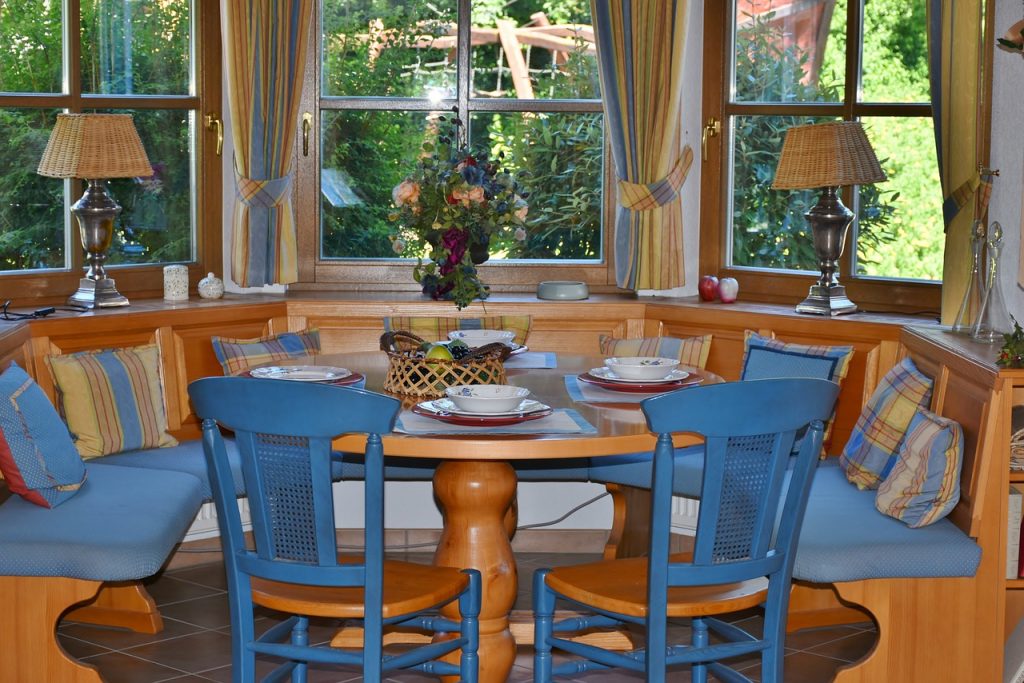Not all windows are created equal! While all windows do the same thing – namely, let light and air into your home – they do so in different ways. Different window designs, operating mechanisms, and other features give different types of windows distinctive pros and cons.
Some windows, for example, are well-suited for rainy climates, while others are best fitted into small rooms. Understanding what some of the most common styles of windows are, and which situations and environments they are best suited to, can help you make your choice.
Should You Use Several Different Styles of Windows?
Most homes will make use of multiple types of modern windows. This is usually your best bet since each room will have different needs. A small bathroom may only need a small sliding window, for example, and there’s no reason for you to install a massive bay window in there anyway.
Awning Windows
Awning windows are windows that open from the bottom edge of the sill upwards. This creates an appearance similar to an awning and prevents water and moisture from entering your home while it is raining. This makes awning windows ideal for climates that seem quite a bit of rain throughout the year.
Awning windows are secure against intruders since it is hard to get fingers inside the frame to lift them upwards. Further, even when open, it can be hard to force your way through an open awning window.
However, awning windows do come with some downsides. Most noticeably, they do not create a large amount of airflow, since they do not trap or direct wind into your home. Further, awning windows have a fairly complex crank, which creates the risk that your window can break and remain stuck closed.
Casement Window
A casement window is effectively the same as an awning window. Difference being, it opens on a side of the windowsill, instead of from the bottom. This makes casement windows much better at catching air and directing it into your home, improving airflow and circulation. Like awning windows, casement windows are also good at keeping intruders out.
On the flip side, casement windows are more fragile than awning windows are. This is because of the same reason. They improve circulation. If a strong gust of wind catches on an open casement window, it can break the window’s crank or even tear the pane of glass right off.
Sliding Windows
Sliding windows are a great choice for smaller rooms since they don’t take up that much space. They are also great for homeowners under restrictive budgets since their simplicity keeps material and installation costs low. Their lack of complicated design also means that sliding windows have long lifespans. Not likely to need repairs or replacements as often as other types of windows.
On the other hand, sliding windows require cleaning to keep the tracks clear of dirt and debris. If stuff is able to accumulate in the tracks, you may find it hard or impossible to open your window.
Bay Windows
A bay window is a combination of several windows that push outwards from the wall of your home. Bay windows effectively create an alcove in your home. Either linking together through the pane or having a small amount of wall between them. This is great for living rooms. It can increase the amount of floor space while simultaneously allowing a large amount of light into the room.
However, bay windows do come with a few notable downsides. They cost much more than other types of windows. This is because they require a change in the structure of the wall itself. They cannot be easily retrofitted into your home as a result either.
Further, in cold climates, bay windows can pose a heating issue. A bay window can create drafts in your home. It can also increase your monthly utility bills when the temperature dips below freezing.
Egress Windows
Egress windows are designed to provide an escape route. They are most commonly installed in the basement, though you can technically install them anywhere.
If installed in your basement, they require the dirt immediately outside of the window to be removed. Creating a hole that you could climb out of in case of a fire. This can increase installation costs substantially compared to smaller fixed panes of glass.
Egress windows require proper drainage in the dug-out hole, as can result in water damage in some cases. Further, it’s important to note that egress windows also represent a security hazard. While they allow you to leave your home in an emergency, they also represent a potential entrance way for intruders. Which is why you need to make sure that the windows are equipped with proper locks or other security measures.
Choosing the Right Style of Window Can be Intimidating
You should keep in mind that the above list covers a lot of the more common ones. The different styles of windows list is not exhaustive. There are many different styles of windows available on the market. That does not even start to consider different materials and types of glass.
While all the choices you face may seem intimidating, you should remember that there are multiple right answers. In a specific room in your home, both a bay window and an awning window would look good.
For more information about installing windows in your home, check out the Windows section of our blog.
This post is a collaboration and may contain relevant and resourceful affiliate links. All opinions are our own and for informational purposes.



